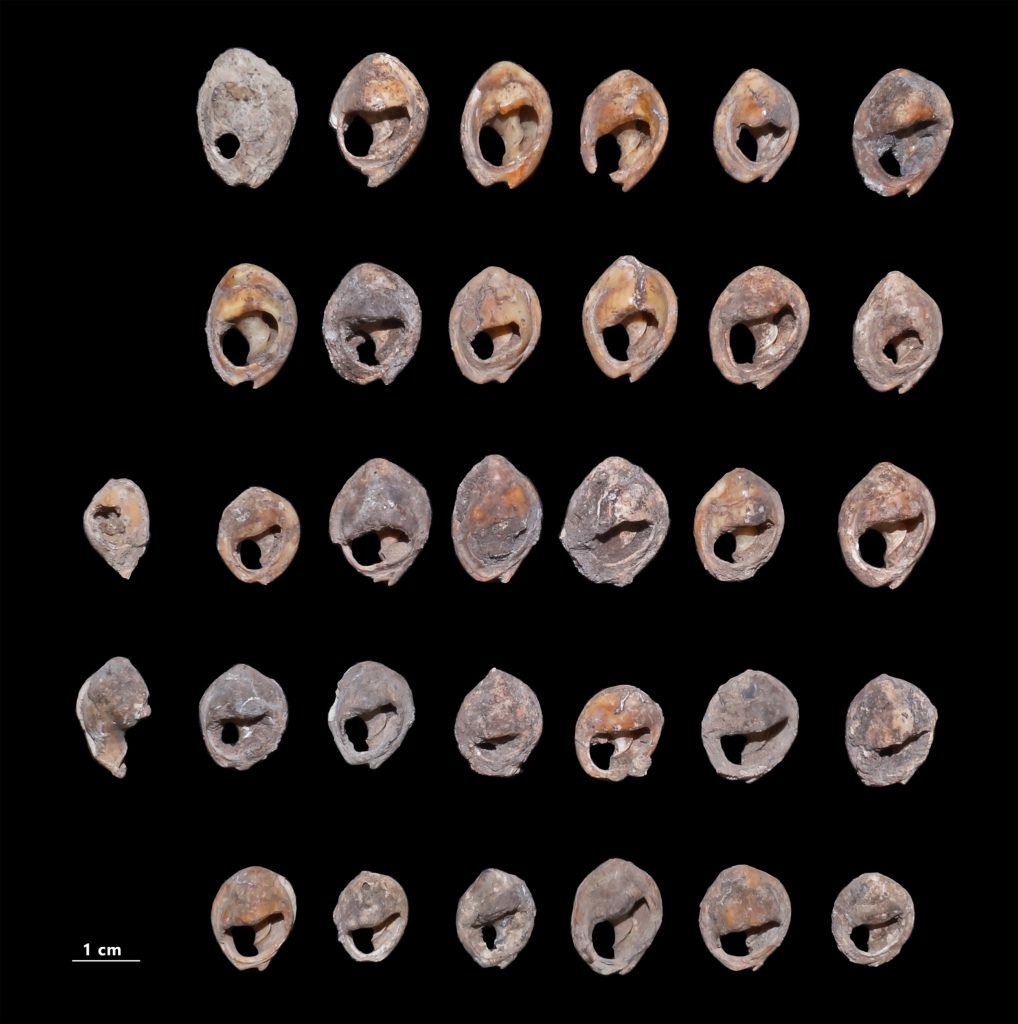This year, Van Cleef & Arpels’s L’École, School of Jewelry Arts celebrates its 10th anniversary with a range of masterclasses, workshops, exhibitions, and events at its Paris and Hong Kong campuses and well beyond.
The program of events—which also take place in cities as far-flung as Doha, Dallas, Seoul, and New York—explores jewelry across cultures and across the ages: cameos and intaglios, gold ornaments from China, France’s forgotten Maison Lacloche, and much more.
“Far before metal works and gold Sumerian jewels, reputed to be the first gold jewelry in antiquity, many important items belong to prehistory,” said Guillaume Glorieux, the director of teaching and research at Van Cleef & Arpels’s L’École. “Ornaments, and then jewels, are the very first expression of the human soul and the oldest art form.”
“Though the parietal paintings are often considered by art historians as the first expression of art in human history, archeologists disagree,” he added.
Glorieux, an art historian and the recent author of The Art of the Jeweler: Excellence and Craftsmanship, clued us into eight ancient jewelry discoveries around the globe that “embody the first art expression in history,” he said, while revealing “what makes us human.”
Bizmoune Cave, Morocco
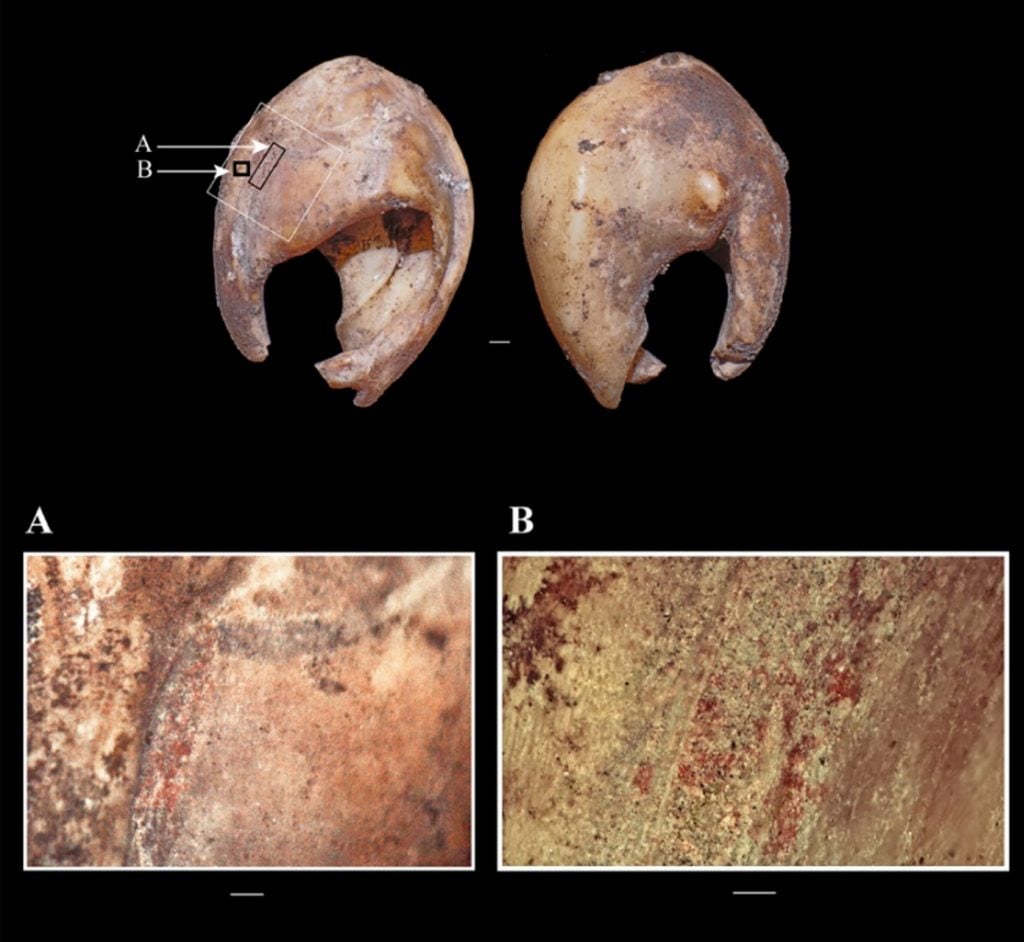
With their traces of perforation, pigment, and polish, what look like ordinary prehistoric seashells from Bizmoune cave in Essaouira, Morocco are believed to have been worn as jewelry. Photo: A. Bouzouggar, INSAP, Morocco.
“The first ornaments worn as jewels were 32 small Tritia gibbosula [snail] shells that archaeologists discovered in Morocco’s Bizmoune cave, close to Essaouira, between 2014 and 2018. It was an essential discovery, revealed to the public last year. Considering the shells are around 142,000 to 150,000 years old, they are among the first signs of human adornment known.
“These shells are not impressive in terms of form or preciousness, but they are meaningful. Archeologists proved they were worn: they show traces of perforation made by a stone tool, and traces of use such as polish and small striations around holes and apexes; some of them have traces of red pigment. These modifications, and the fact that the shells were found far from the coast (around 30 to 50 kilometers away) suggest they were collected not to nurture people. We would need a terrible quantity of these shells to collect just one gram of [meat].
“As they are so small, a real dexterity was needed to perforate the shells without destroying them. The first people creating such jewels were real craftspeople, then.”
Krapina Neanderthal Site, Croatia
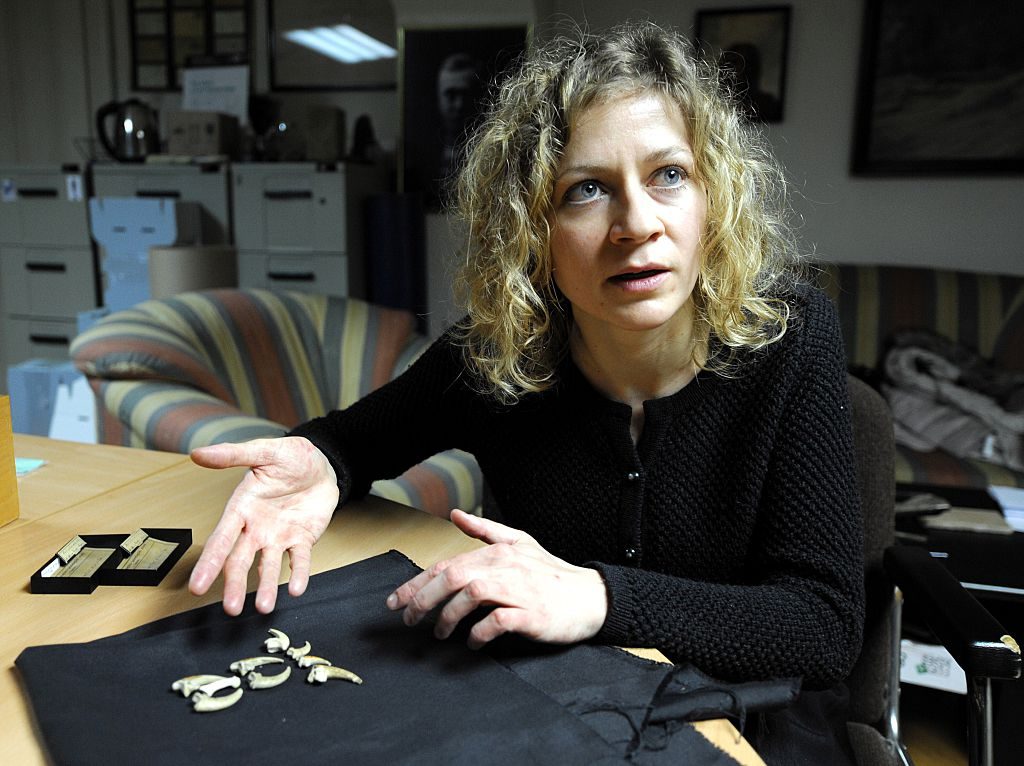
Anthropologist Davorka Radovčić, a curator at the Croatian Natural History Museum in Zagreb, with white-tailed eagle talons turned jewelry from 130,000 years ago, found at the Krapina Neanderthal site. Photo: STR/AFP via Getty Images.
“In 2015, archeologist Davorka Radovčić proved that 130,000-year-old eagle talons—found one century ago on the Neanderthal site Krapina, in Croatia—had cut and polishing marks. They could have been sculptured and worn as jewels, predating the apparition of Homo sapiens in Europe.”
Pigeons Grotto, Morocco
“The same kind of seashells [as those found in Bizmoune cave were] excavated in 2004 at another Moroccan site—the Pigeons Grotto, in Taforalt village—with similar traces of wear and perforations. They are 82,000 years old. Researchers suppose they were worn in necklaces, bracelets, or sewn on clothes. They are the predominant ornamental identification across the entirety of North Africa, and arguably into the Levant, for tens of thousands of years, suggesting a common habit, probably a symbolic use in a cultural community.”
Blombos Cave, South Africa
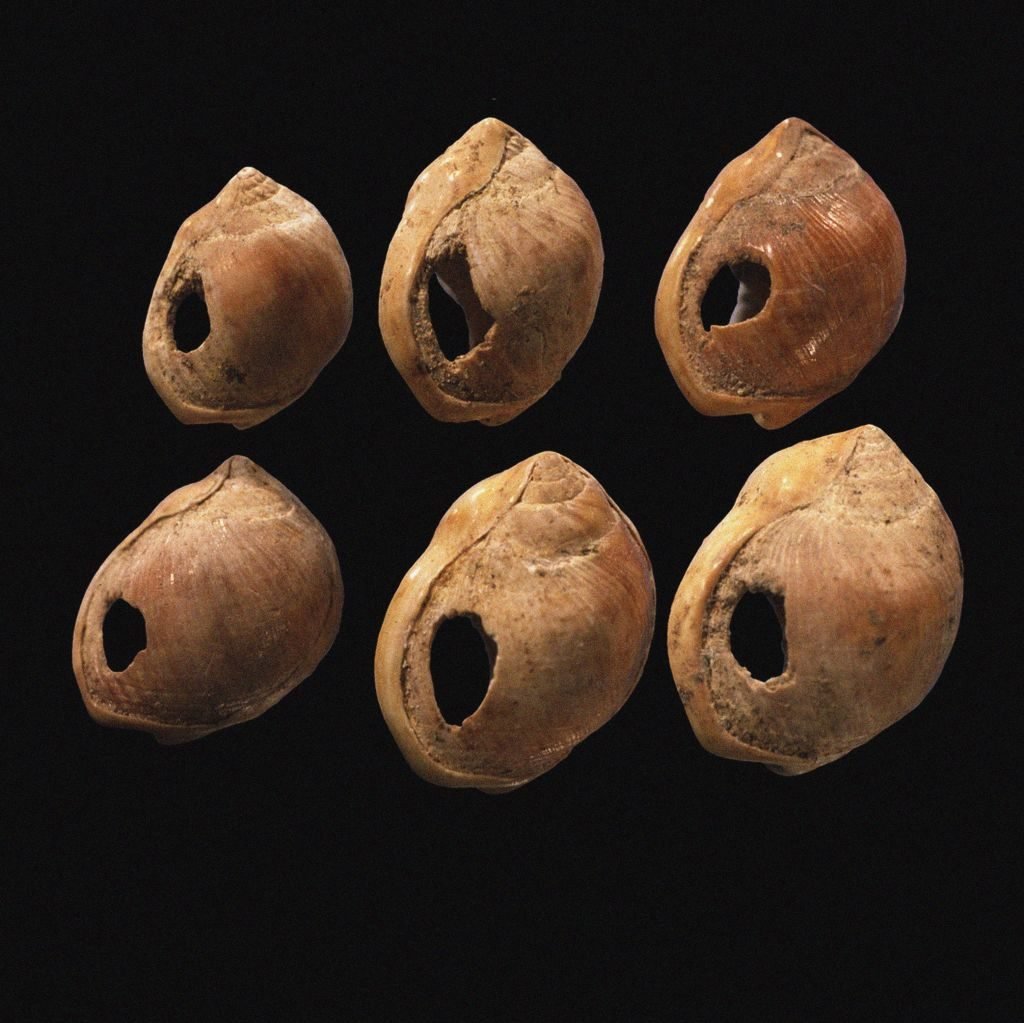
Perforated, 75,000-year-old shell beads discovered in Blombos cave, South Africa. Photo: Fine Art Images/Heritage Images/Getty Images.
“The function of these primitive ornaments was probably social or religious, corresponding to the extension of social ties beyond the family unit, or beyond a group. They could then reveal the impact of migrations as a visual symbolic language, even a kind of identity. They could be one of the first bases of social exchange and may have contributed to the development of human consciousness.
“A 2018 [study in Blombos grotto in South Africa] demonstrated that small pearls—five millimeters, 75,000 years old—were sculptured in seashells, likely for clothing ornaments, or to be mounted on bracelets or necklaces. They were discovered in the same cave as the first human drawing known today, and are considered the first expression of a conceptual thought.”
Caves of Antón and Los Aviones, Spain
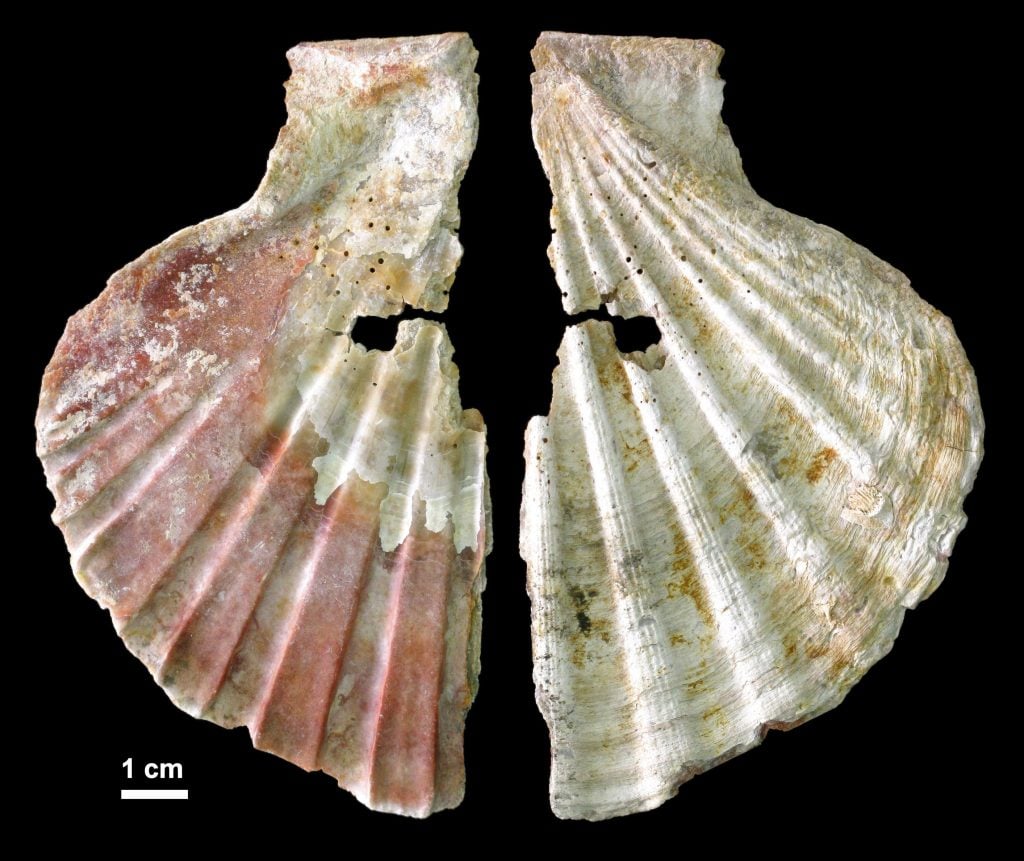
The pigments and holes on this 50,000-year-old pecten shell from Cueva Antón, Spain signify that it was worn. Photo: João Zilhão.
“Since 2010 [in Spain, archeologist João Zilhão’s team has excavated] fragments of oysters and scallops showing traces of orange and red pigments as well as suspension holes. The site is close to Murcia within two caves, Antón and Los Aviones. The shells discovered there are approximately 50,000 years old.
“Similar sizes and decorations among them reinforce the [theory] that they were assembled to be worn, embodying an identity inside a clan, social or religious. Neanderthals, responsible for these painted jewels, were then competitive with Homo Sapiens in this domain—not followers, as it was believed before.”
Chauvet Grotto, France
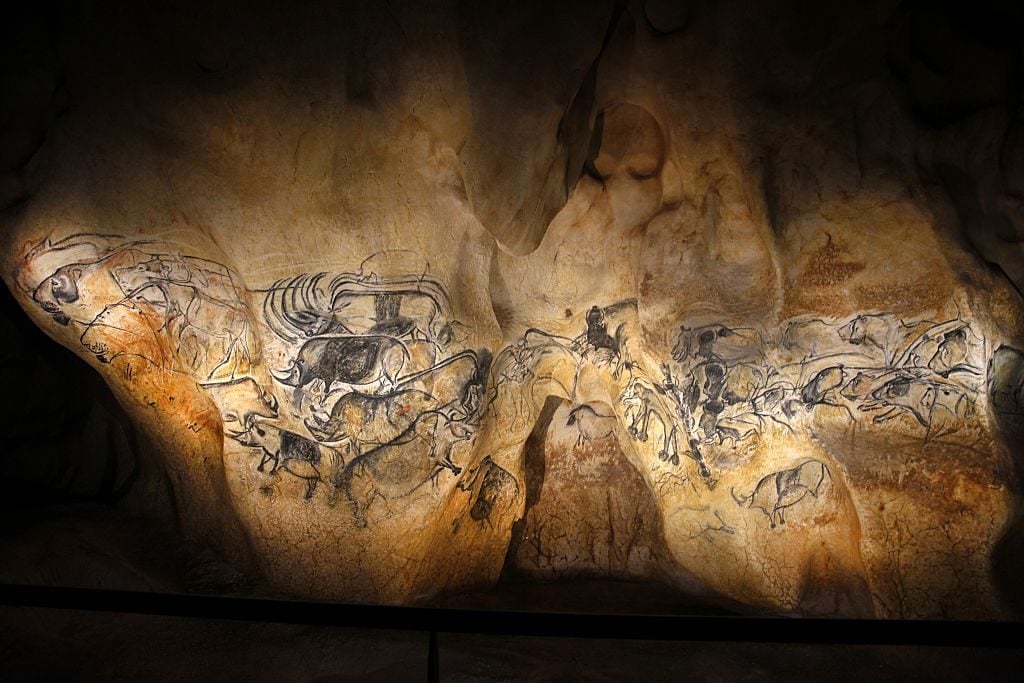
A replica of France’s Chauvet-Pont d’Arc cave. The original is a UNESCO World Heritage site with some of the world’s oldest-known cave paintings, which feature symbols also found in jewelry from the era. Photo: Patrick Aventurier/Getty Images.
“Coming from the east, perhaps from Asia, Aurignacians settled in Europe 38,000 to 40,000 years ago. They left objects and [ornamented animal parts with signs and symbols] testifying to new practices spreading across many places. Sites in Dordogne and the adorned Chauvet grotto in Vallon-Pont d’Arc, in the South of France, show consistency between the first ornaments and cave paintings.
“Bovine incisors, from bison and aurochs, were dominant, along with fox and deer teeth. They were perforated [to wear on wires], assembled in specific geometric figures, or engraved with signs that are today impossible to interpret with complete assurance. But some are understood as universal symbols, such as the feminine triangle, linked to fecundity, sexuality, and Mother Earth.”
Child’s Tomb in Malta, Siberia
“Ornamented pendants with geometric signs became more usual during the Upper Paleolithic period, beginning 45,000 years ago. A famous ivory pectoral [necklace that is 15,000 to 18,000 years old was] found in a child’s tomb in Malta, Siberia. Diverse representations of children, concentric circles, and stylized snakes suggest an elaborate corpus of signs related to funeral rituals.”
Mézine, Ukraine
“After the elaboration of pearls and pendants or pectorals, bracelets, buckles, and diadems were the most-used adornments. The most famous examples have been found around Russia: Ivory bracelets [around 15,000 years old] found in Mézine, Ukraine, carved from mammoth tusks and covered with geometric shapes and symmetric perforations.”
“For many of these geometric signs, specialists confess that they don’t know their specific significance. As many jewels were found in tombs, they suppose they had a protective purpose, something spiritual or shamanic. They could embody a status in the society as well as a kind of aesthetic. They appear with the first migrations, and could then embody a cultural purpose. Which one is the big question.”
